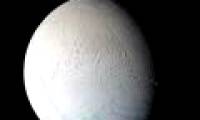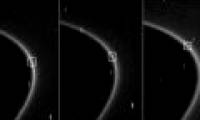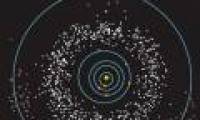
A group of international scientists headed by Oxford University have looked at the dense and hot mass in the center of the planets ...

Scientists have found new evidence that a Saturn satellite has an ocean or saltwater lake beneath its frozen surface.

NASA's Cassini spacecraft has just discovered in the G ring of Saturn a small moon, which looks like a translucent bright light moving.

According to computer simulations, missing asteroids in our solar system may be the result of angry giant planets as they migrate to their current locations.

Images sent by Cassini's probe show evidence of ocean and ice volcanic existence on Saturn's Enceladus and Titan satellites.

American astronomers argue that clouds of dust and gas escaping from one of Saturn's satellites may contain water, an important factor for life.

Saturn has special aurorae that light up polarity unlike any known planetary aurora in the solar system.

The methods of the solar system are not a perfect arc, they are compressed as a distorted ball, floating in the space between planets and there is no symmetrical arc between the

In addition to the aurora form as usual on Earth, researchers have discovered that Saturn has a different type of aurora, which is fainter but continuous.

Christiaan Huygens was the first to discover the Titan satellite, but the name was set by another astronomer two centuries later.
 A group of international scientists headed by Oxford University have looked at the dense and hot mass in the center of the planets ...
A group of international scientists headed by Oxford University have looked at the dense and hot mass in the center of the planets ... Scientists have found new evidence that a Saturn satellite has an ocean or saltwater lake beneath its frozen surface.
Scientists have found new evidence that a Saturn satellite has an ocean or saltwater lake beneath its frozen surface. NASA's Cassini spacecraft has just discovered in the G ring of Saturn a small moon, which looks like a translucent bright light moving.
NASA's Cassini spacecraft has just discovered in the G ring of Saturn a small moon, which looks like a translucent bright light moving. According to computer simulations, missing asteroids in our solar system may be the result of angry giant planets as they migrate to their current locations.
According to computer simulations, missing asteroids in our solar system may be the result of angry giant planets as they migrate to their current locations. Images sent by Cassini's probe show evidence of ocean and ice volcanic existence on Saturn's Enceladus and Titan satellites.
Images sent by Cassini's probe show evidence of ocean and ice volcanic existence on Saturn's Enceladus and Titan satellites. American astronomers argue that clouds of dust and gas escaping from one of Saturn's satellites may contain water, an important factor for life.
American astronomers argue that clouds of dust and gas escaping from one of Saturn's satellites may contain water, an important factor for life. Saturn has special aurorae that light up polarity unlike any known planetary aurora in the solar system.
Saturn has special aurorae that light up polarity unlike any known planetary aurora in the solar system. The methods of the solar system are not a perfect arc, they are compressed as a distorted ball, floating in the space between planets and there is no symmetrical arc between the
The methods of the solar system are not a perfect arc, they are compressed as a distorted ball, floating in the space between planets and there is no symmetrical arc between the In addition to the aurora form as usual on Earth, researchers have discovered that Saturn has a different type of aurora, which is fainter but continuous.
In addition to the aurora form as usual on Earth, researchers have discovered that Saturn has a different type of aurora, which is fainter but continuous. Christiaan Huygens was the first to discover the Titan satellite, but the name was set by another astronomer two centuries later.
Christiaan Huygens was the first to discover the Titan satellite, but the name was set by another astronomer two centuries later.




 NASA's 'Ninth Planet' Shows Signs of Being Friendly to Life
NASA's 'Ninth Planet' Shows Signs of Being Friendly to Life Why did American astronauts have to be quarantined when returning to Earth?
Why did American astronauts have to be quarantined when returning to Earth? China surprises the world by building a cable-stayed bridge 'above the clouds'
China surprises the world by building a cable-stayed bridge 'above the clouds' Why do women sleep less and wake up more than men?
Why do women sleep less and wake up more than men? Revealing the secret inside the stuffed animal claw machine, from there, summarizing experience to help you increase your winning rate many times over
Revealing the secret inside the stuffed animal claw machine, from there, summarizing experience to help you increase your winning rate many times over What would happen if you dug a hole through the Earth and jumped in?
What would happen if you dug a hole through the Earth and jumped in? Camera takes a photo that lasts 1,000 years
Camera takes a photo that lasts 1,000 years Was there nuclear war in ancient times?
Was there nuclear war in ancient times?